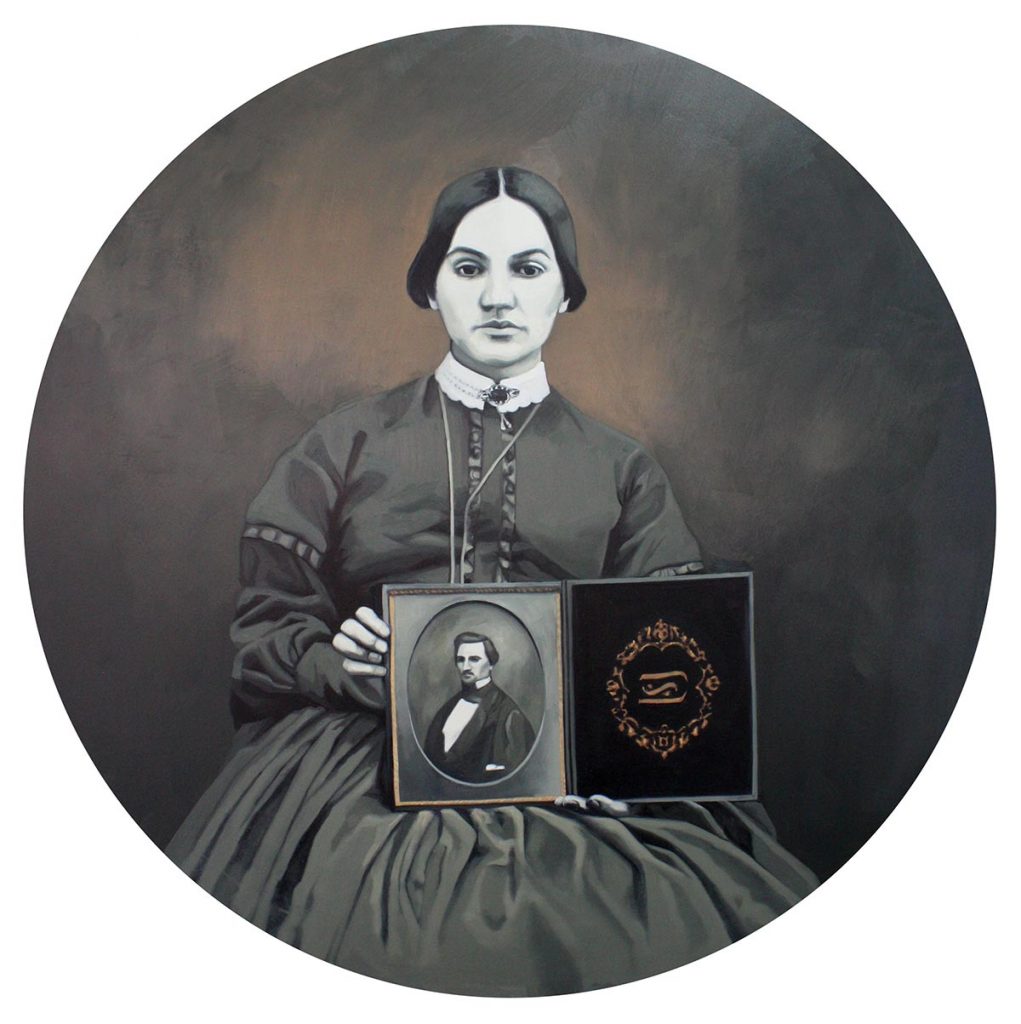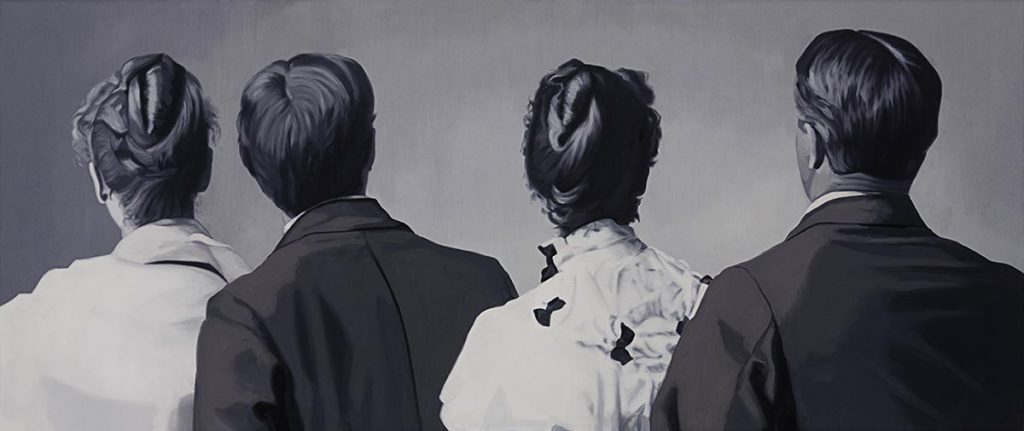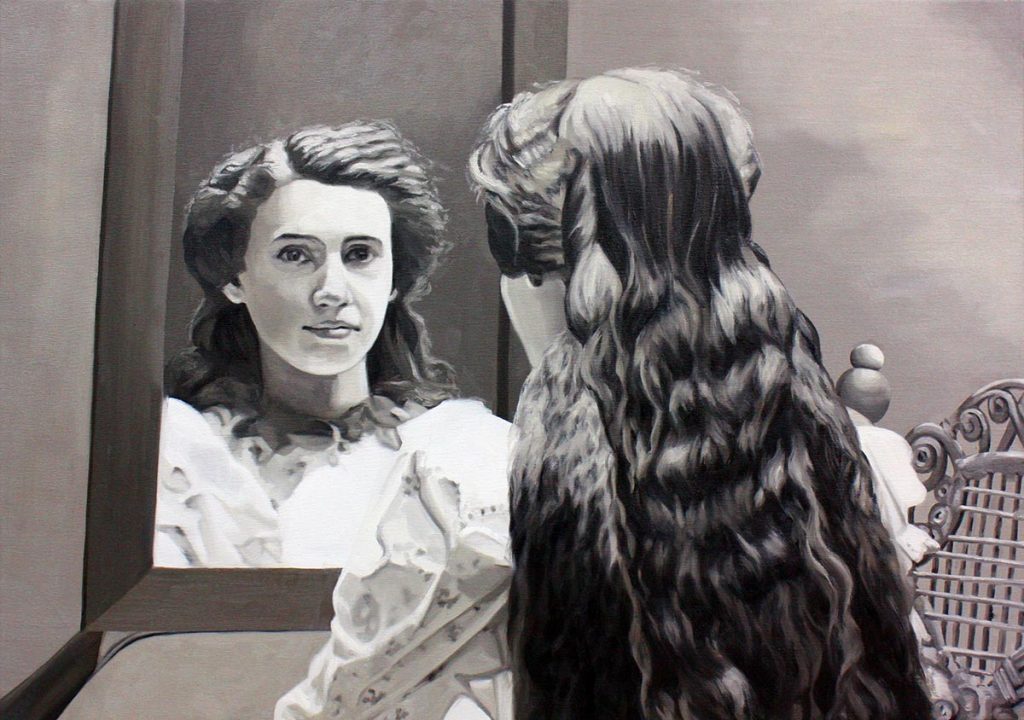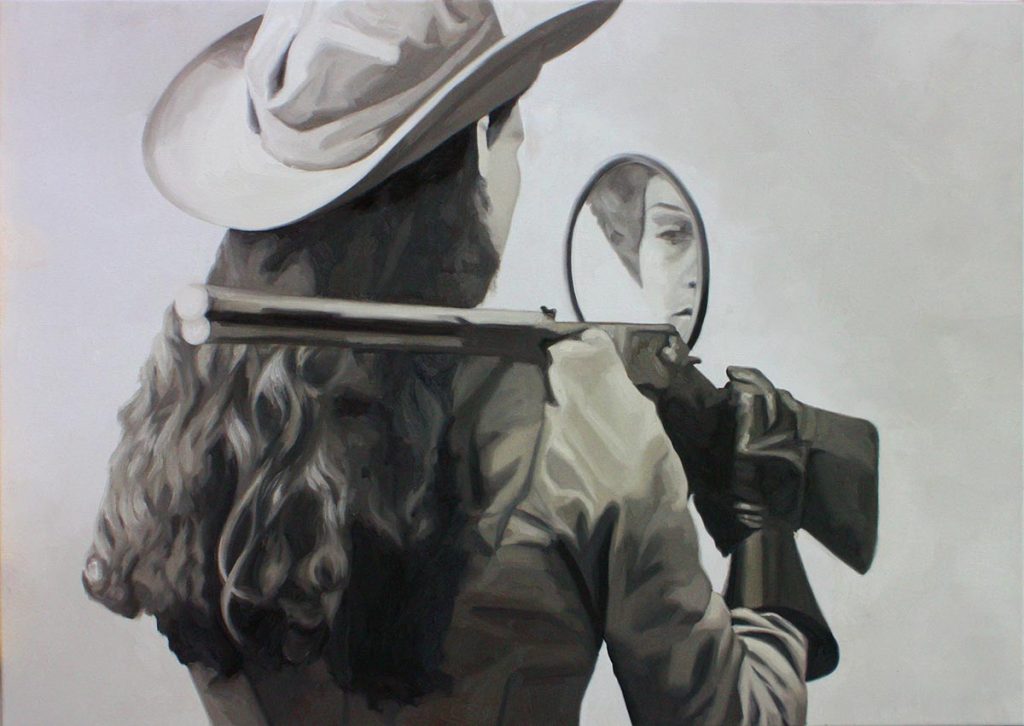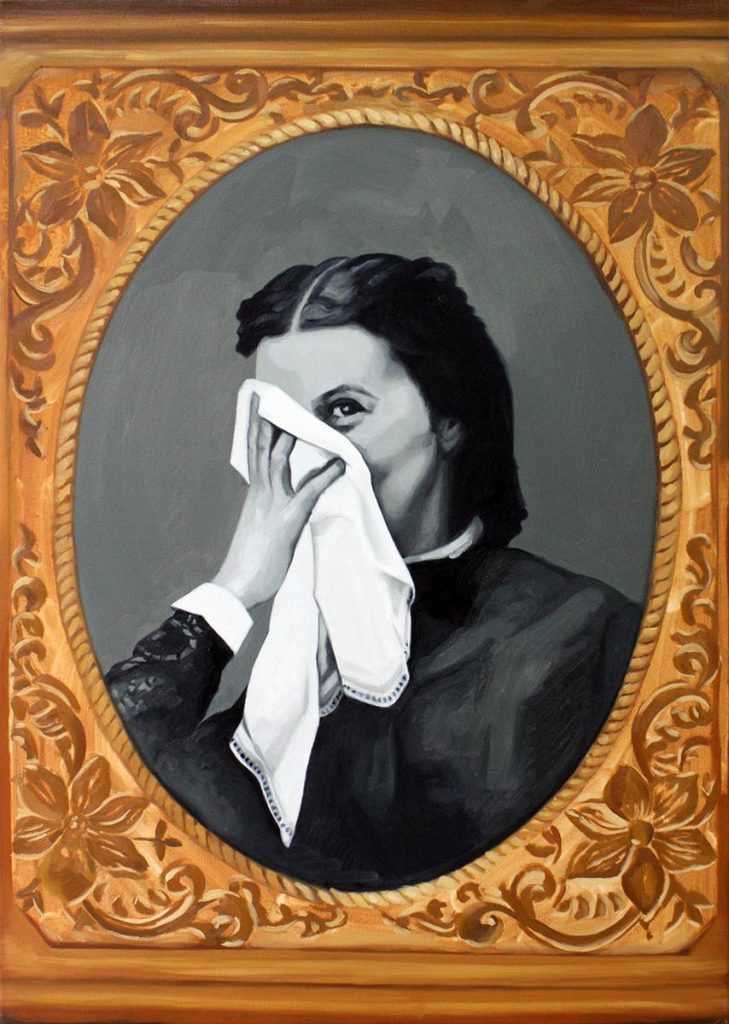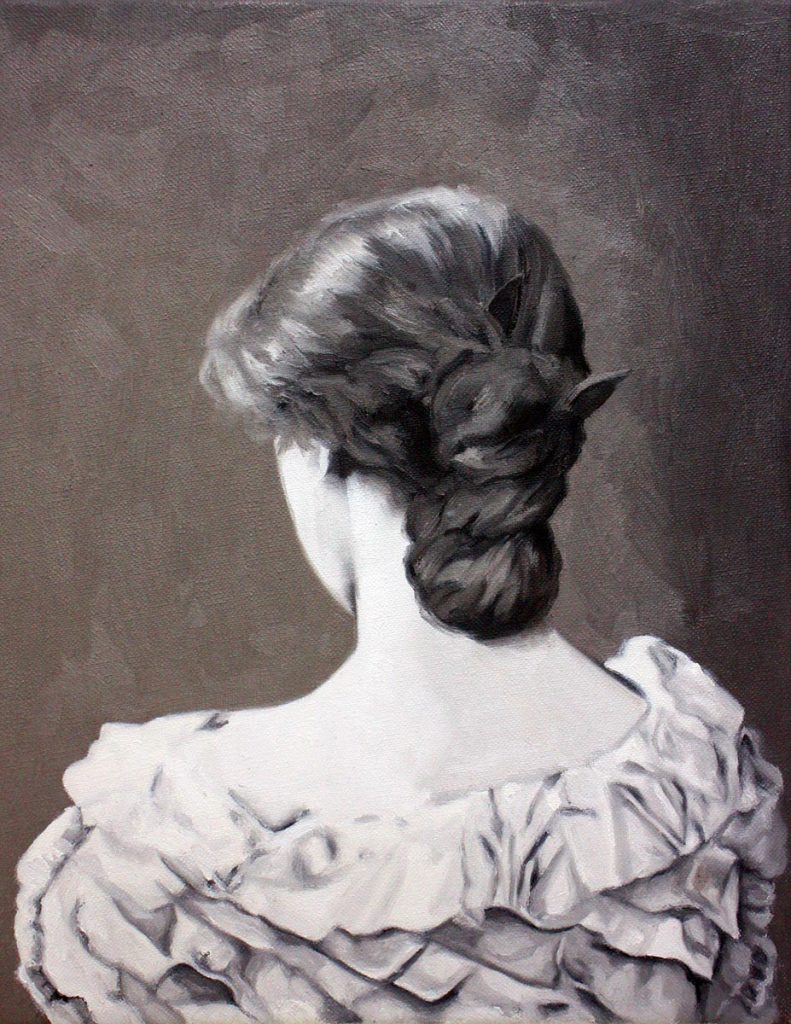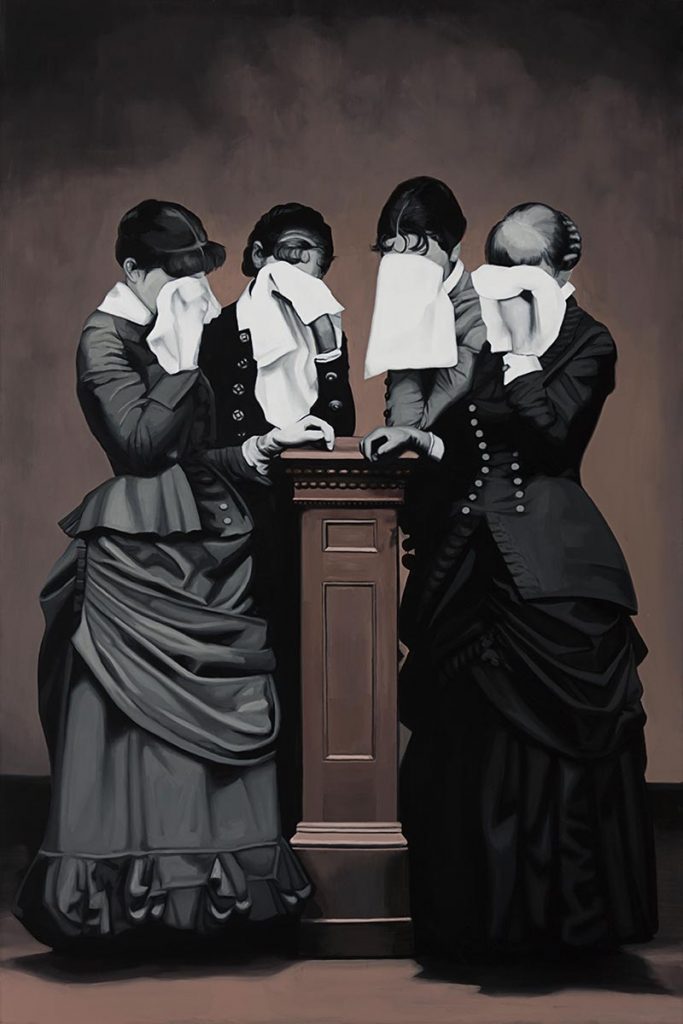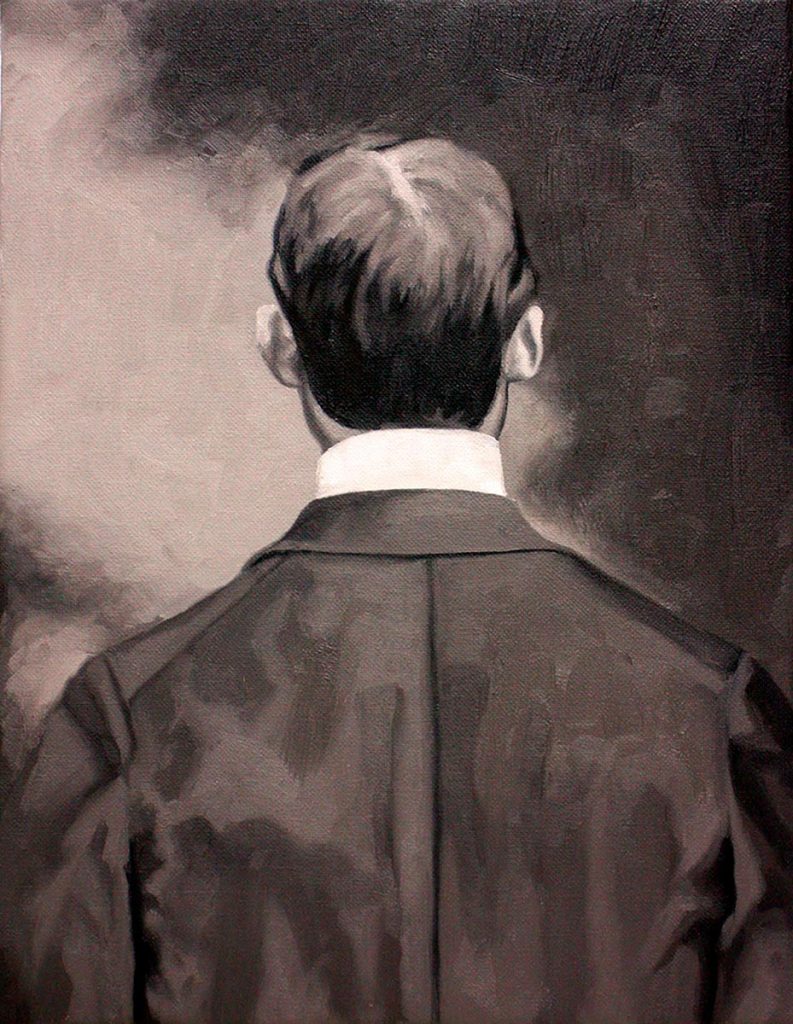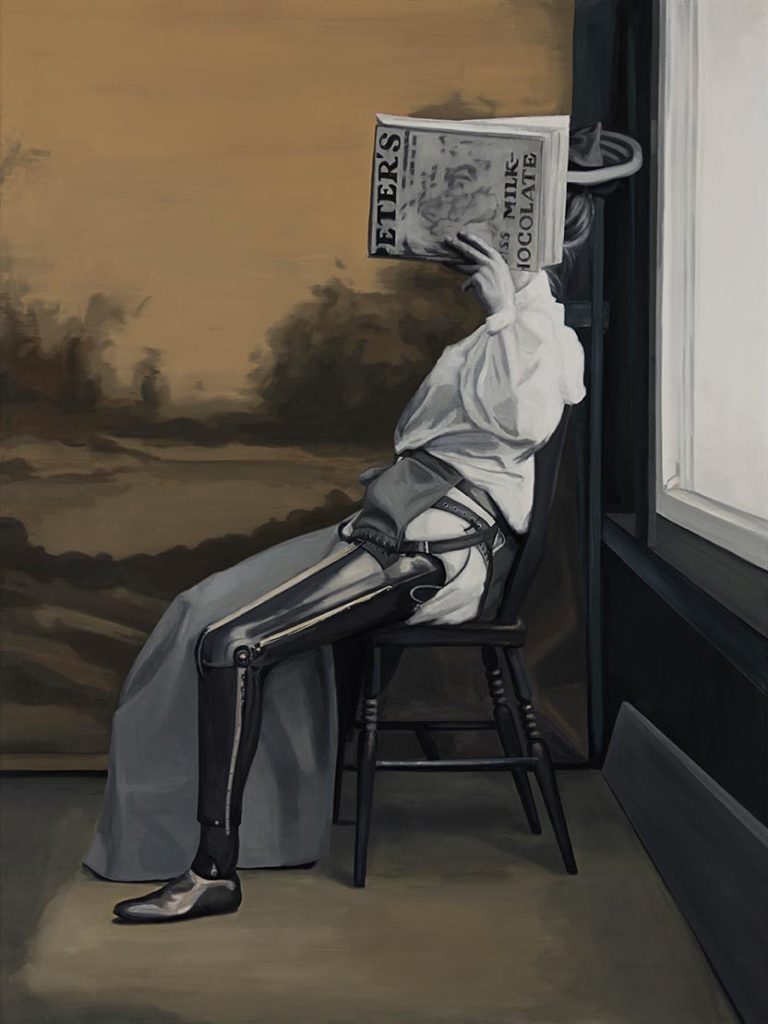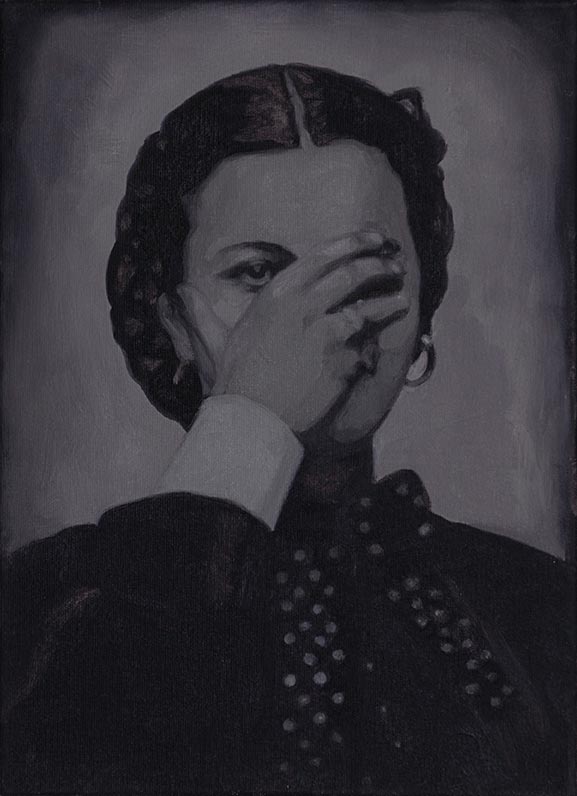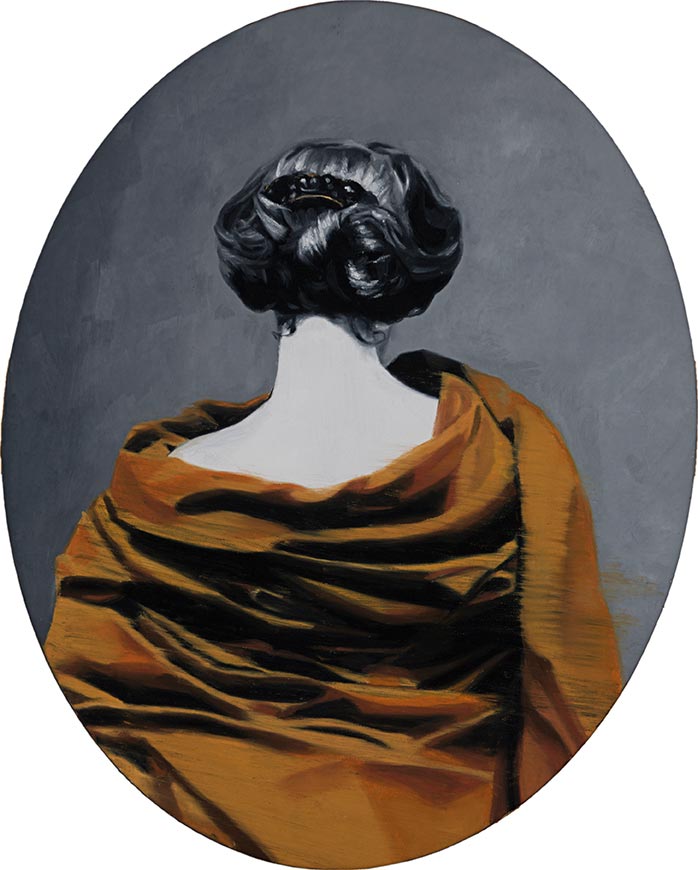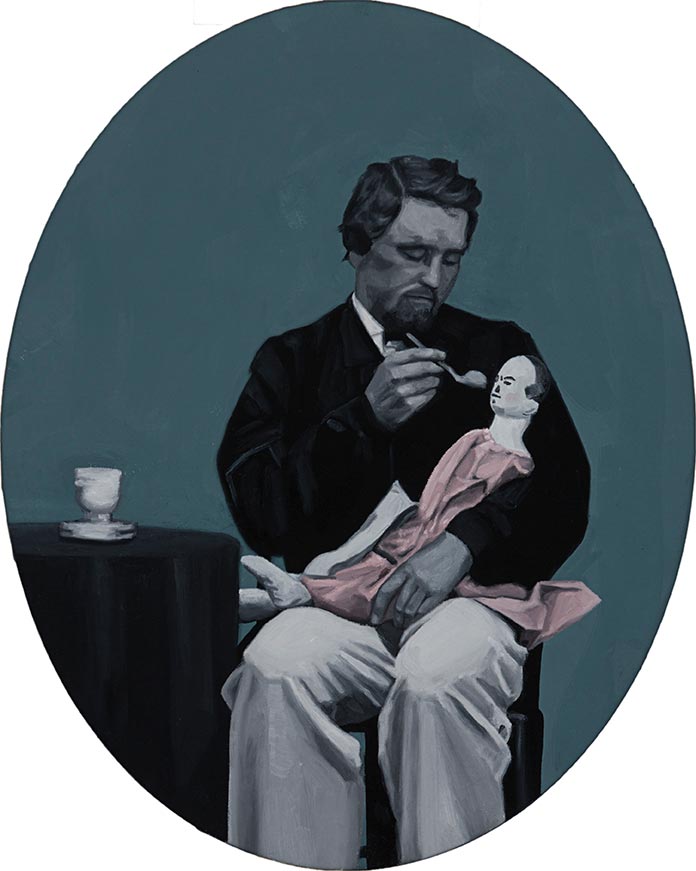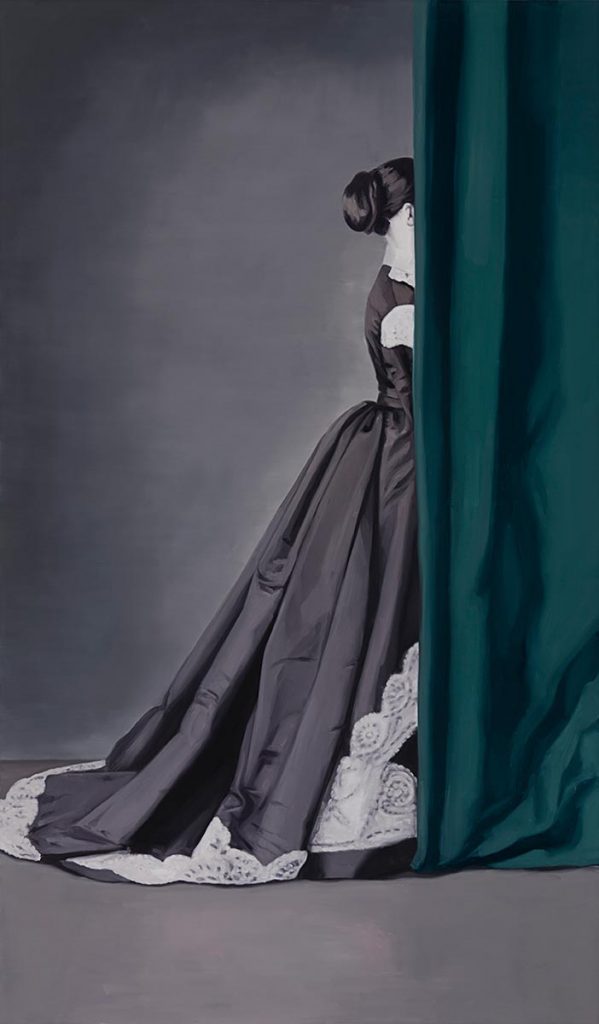
Mechanisms of Defense
29 June 2020
Anniversari Collective Exhibition « 1 »
1 July 2020Cristina Toledo
THE KIDNAPPED EMOTION
FEBRUARY 7th – APRIL 13th 2019
PRESS RELEASE
CRISTINA TOLEDO
True that to show pain is to show an emotion, but the mere idea of staging it makes us aware of a mentality, of some uses and customs that prioritize representation over reality, thus offering a certain vision to the other members of the community: the right way to suffer, the right way to deal with certain situations, the right way to “belong to”.
This moral vision is thus underpinned as “non-institutionalized social controls” or the narrow line with which the members of a certain community tacitly ensure compliance with the established rules of coexistence. It is true that with only Thinking of the word emotion comes to our mind in its two most immediate aspects: joy and suffering. Neither of these two nuances come to our mind when we contemplate the characters represented by Cristina, on the contrary, nothing but neutrality and contention disguised at most.
Same with back portraits or “anti portraits”. If offering the face is a traditional attempt to dive into the soul of the represented, alluding to elements of his personality or his psychology while immersing us in the sphere of their latent emotions, the representation “from behind” supposes a radical cancellation of everything concerning emotion as an element of communication with “the others” as social beings.
Interested from the beginning of her career in the role of women, as in previous works she focused her discourse towards a critique of the world of beauty, with The Kidnalled Emotion she offers us an indiscreet window in a gray scale with anecdotal touches of color, to a world that no longer exists in its external forms, but that continues in essence in each one of us in making th effort to show to that these forms, wether fair or oppressive, we are capable of bite the bullet to make us worthy of belonging to the group.
BIOGRAPHY
CRISTINA TOLEDO
Cristina Toledo Bravo de Laguna Cristina Toledo Bravo de Laguna was born in 1986 in Las Palmas de Gran Canaria. Graduated in Fine Arts from the Complutense University of Madrid in 2009, she quickly participates in group exhibitions both in the capital and in Gran Canaria. Then she exhibits individually in Las Palmas (Club la Provincia), Las Rozas (Pérez de la Riva Cultural Center), Valladolid (Javier Silva Gallery) and Madrid (Vuela Pluma Ediciones). She has recently participated in the MARTE (Castellón) and JustLX (Lisbon) art fairs. Her work is also part of collections of institutions such as the Fundación Gaceta Collection (Salamanca) or the Miradas Collection (Alicante). Besides, Cristina Toledo was awarded and granted for scholarships between 2011 and 2017, such as the First Prize for Young Painters of the Gaceta Foundation. Thanks to this award, Cristina opens a Victorian story in 2018 at the DA2 Art Center in Salamanca. We have dedicated her first important individual exhibition in Madrid in February 2019. Since then, we have represented her exclusively in France.
Cristina Toledo’s work is based on photographic archives. Her painting traces historical themes making reference to the feminine condition. Her interest in the exaggeration in the staging, leads her to look for original, different or just rare photographs. Her style is part of the new figurative trends.
Awards
2017 Premier Prix des Jeunes Peintres de la Fondation Gaceta, Salamanque
2016 Prix Miradas, Fondation Jorge Alió, Alicante
2013 Premier prix de peinture Mardel, Calpe
Individual exhibitions
2019 L’émotion séquestrée, Galerie Tournemire, Madrid
2018 Une histoire victorienne, DA2 (DOMUS ARTIUM 2002), Salamanque
2017 Sacrifice, Galerie Javier Silva, Valladolid
2016 Nouveau Monde, Vuela Pluma Éditions, Madrid
2015 Un acte de foi, Galerie Javier Silva, Valladolid
2014 Un champ de bataille, Centre Culturel Pérez de la Riva, Las Rozas
2012 Analogies, Club La Provincia, Las Palmas de Grande Canarie
Group exhibitions and fairs
2018
– MARTE Foire d’art Contemporain, Stand de la galerie Pep Llabrés, Castellón
– Peinture Peinture, ABM Confecciones, Madrid
– JustLX Lisboa Contemporary Art Fair, Stand de la galerie Pep Llabrés, Lisboa, Portugal
2017
– Espacio CV, CAAM, Las Palmas de Grande Canarie
– + F, Artistas post-conceptuels aux Canaries 2000–2017, San Martín Culture Contemporain, Las Palmas de Grande Canarie
2016
– Le corps comme mesure, Université Rey Juan Carlos, Madrid
– Concoiurs Miradas, Fondation Jorge Alió. Lonja del Pescado, Alicante
2015
-Tolstoi Vuela Pluma Éditions, Madrid
2014
– 7x114x146, Galerie Liebre. Madrid
2013
– Versos, Galerie Manuel Ojeda. Las Palmas de Grande Canarie
Conference « A Moral Story » with Cristina Toledo, Madrid, 03/14/19. Fotographer: Alejandro Cayetano
« My work reflects issues that interest me, and being a feminist, that concern for the role of women in society is observed in my work »
Tournemire Gallery – With this exhibition, you chose to take the Victorian era as your inspiration. Why are you interested in this specific period?.
Cristina Toledo – The paintings in “The sequestered emotion” are part of a series that I started from photographs from this period that caught my attention because they encoded mourning and the relationship with death based on the concealment of the face. I had already worked in previous series with the mask and the hidden face because it seems to me an interesting subject for painting, a technique that can be associated with the duality of hiding / revealing. What interested me at the time was that rigid and codified way of telling emotions. That established and conventional correlation between the image and meaning and the advantages that selecting images in which that reading is not so clear could give me, at least for us who read it without having all the codes from those days.
T.G. – You paint from photographs found in different types of files. Why is photography a more powerful source for you than the living model? And how do you choose among them the ones you consider most relevant?
C.T. – I have always been fascinated by photographs from other eras. See family albums, old press, illustrated books from the beginning of the century… And I like to use the representation of the human figure to think about the ways we have are related to images and the “visible”. We are surrounded by images all day, more and more, so I find it interesting to rescue some of them to transform them into paintings so they can be seen from a different perspective, to spend time contemplating them and thinking along with them.
To select which photographs to take to canvas, I take into account the environment that I want to create with the set: how the pieces will dialogue with each other, the evocative power of the image, and the formal elements that allows me digg into an interesting pictorial work.
T.G. – In your series of paintings, the characters do not seem to express any real emotion because they hide, cover or reflects her face through a mirror and, in some cases, they act as if they wanted to teach the “right way” to suffer. What do you think is behind all this?
C.T. – I think we are facing some examples of a time when everything was exactly measured and coded, and each emotion had to be manifested in a conventional way, without leaving room for spontaneity. In turn, some of the portraits are probably an artistic experiment by the photographer, which also introduces a playful element in the series. If we stop to think about the current types of photographs we see every day, we could also establish a few perfectly coded categories, although, apparently, it seems that we are very free and “natural” in our way we presen tour image.
T.G. – You are, in the end, taking about life in society, about human behaviors rather than about a specific time. Have you always been interested in establishing your conversation about the world around you and about society in general with your work?
C.T. – Exactly. I am interested in the fact that the one who sees my work, can establish parallels between different temporal moments, without having to show it in an evident way. I think that using photographs from other times makes that more open reading possible. It is not something I’ve been always aware of or intentionally pursued. The look at life in society has emerged naturally in my work, often based on an interest in the representation of women.
T.G. – Right, the woman is often, if not almost always, in the center of your work. Could you describe your work as committed and feminist or are they labels that you do not identify with?
C.T. – The committed artist label I feel it does not suits me, because I believe that there are other artists who approach social problems in a much more active and direct way than I do. However, my work reflects issues that interest me, and being a feminist, that concern for the role of women in society is present in my work. Both in this series and in others I have worked on before, I have been very interested in showing how numerous methods of control over women are established by codifying how their bodies should be and how they can or cannot be shown to others. My way of dealing with these issues may not be obvious, probably because painting as a language is also one of my main interests when working, but I do think it is right to describe my work as feminist.
T.G. – In your way of painting you do not approach a hyper-realistic style because it would not make sense in terms of reinterpretations of the photographs. How would you rate your pictorial style and in what sense does it move away from the simple photographic copy?
C.T. – It is difficult for me to label my painting, beyond being a realistic figuration but not photorealistic. I always try to play with the different possibilities that the medium provides, applying different pictorial resources as long as they allow me to maintain a certain unity in the image while not loosing the meanings that I found in the photography from which I started. I want to think that with my way of treating painting I add a load of plasticity and sensuality to the initial image.
T.G. – We would like to know your general opinion on the art world today and in particular on the role of painting in it?
C.T. – The Art World is so wide and varied that we could better say the Art Worlds, since I believe that even only within the Madrid scene many trends and affinities can be distinguished, as well as many levels of professionalization and market. For the part that concerns me, and thinking about the role that painting plays, I would say that it is a medium that at first arouses little interest in those who decide what is relevant for exhibitions and what is supposed to define what is going on these days. However, it is a medium that continues to have a privileged role in the market, and this is easy to prove if we tae a look into the programming of galleries and at fairs. Then there are the artists, who in the end do they we want, because with a market as weak as the Spanish one, the best thing you can do is be honest and consistent with your interests. I believe that painters will continue to work because painting is a language that never runs out and connects with tactile and aesthetic needs that are deeply human, just as I believe that it will always have an important place in the Art world because it will there always be people who enjoy it.
T.G. – What are you working on right now? Where is your focus as an artist in the short-medium term?
C.T. – Right now I continue working on the same line for an upcoming Solo Exhibition that I have scheduled for May. I think I can still continue exploring these images and that I have not yet exhausted the meanings and reading possibilities that I can extract from them. At the same time I am starting to collect images related to spiritism and magic tricks; diving into the first photographic effects that simulated ghost appearances and represented the supernatural. I’m still in a very early stage of it, so I really don’t know if it will see the light as a series of paintings or will stay in one of my many folders of images that does not go beyond the computer screen.


